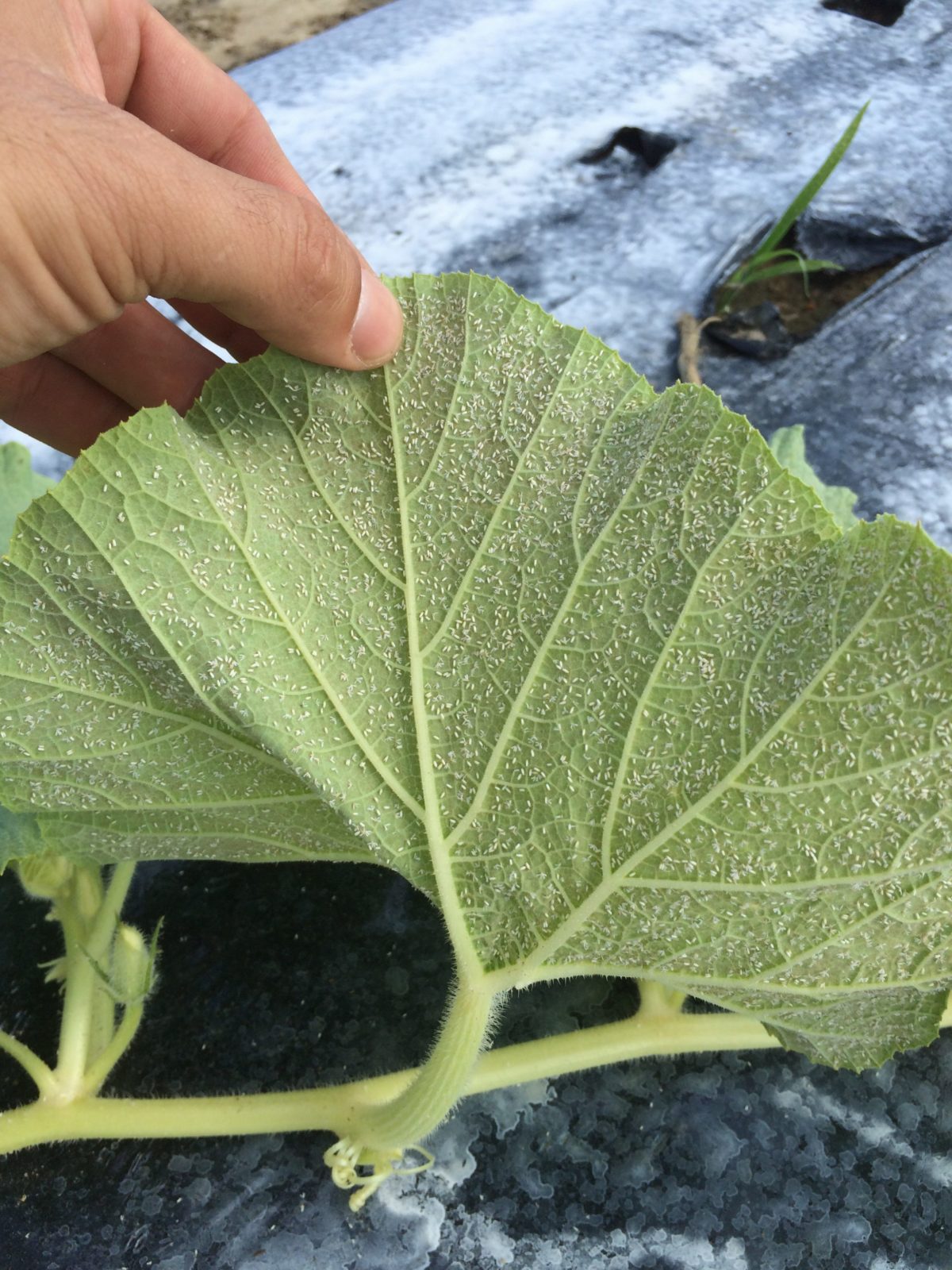By Nicholas Dufault and Zach Eldred Industrial hemp diseases have continued to be identified in Florida’s production fields and greenhouses across the state. As researchers learn more about how to grow this crop, they are identifying the diseases that will affect the state’s industrial hemp production systems. There is a list of more than 40 currently know hemp diseases; 16 …
Powdery Mildew: Conditions Ripe for Disease
By Clint Thompson North Florida’s watermelon season is nearing an end in multiple fields, but one disease continues to persist. Growers in the region still need to be wary of powdery mildew disease. Bob Hochmuth, UF/IFAS Regional Specialized Extension agent in Live Oak, Florida, said in his weekly email that if growers have a couple of harvest weeks left, they …
Florida Farmer: We Need to Protect Our Domestic Demand From Unfair Trade
By Clint Thompson One of the top issues affecting Florida vegetable and specialty crop production is imports. A drastic increase in produce coming from other countries continues to negatively impact the domestic markets. While morale has been low, especially following the U.S. International Trade Commission blueberry decision in February, some farmers remain upbeat. That includes Aaron Troyer, chairman of the …
Pecan Outlook: Hope for Market Rebound in 2021
By Clint Thompson Pecan harvest season is still at least three months away, but one Georgia farmer has high hopes for the upcoming year. “I hope that we’re looking at stronger prices for the coming year. We’re still a good ways out on that. We’ve got a lot of pecans left to try to make between now and harvest. If …
Non-Factor: Whitefly Numbers Low So Far This Season
By Clint Thompson One pest that can have a devastating effect on vegetable crops in the Southeast has been a non-factor so far this production season. But that doesn’t mean growers should let their guard down against whiteflies. “We probably have the lowest populations we’ve had in several years coming out of winter vegetables, which is fantastic,” says Stormy Sparks, …
Fusarium Wilt: Disease Worse This Year Amid Cooler Spring
By Clint Thompson It wasn’t ideal conditions for most watermelon diseases this spring. But one pathogen preferred the cool temperatures. Fusarium wilt, the disease that can cause plant death if the infection is severe enough, has been spotted throughout Florida and in the South Georgia production region, said Josh Freeman, University of Florida/IFAS Associate Professor in Horticultural Science. The cooler …
Tasty Treat: Exceptional Quality Expected for Watermelons This Year
By Clint Thompson Ideal weather conditions contributed to “exceptional” quality of this year’s watermelon crop. That’s the expectation of two industry experts. “I think the quality this year has been outstanding,” said Bob Hochmuth, UF/IFAS Regional Specialized Extension agent in Live Oak, Florida. “Some of that is due to the climatic conditions. We had a lot of real, clear, bright …
Plea for Help: Ag Groups Send Letter to Senate Leaders, Want Ag Labor Reform
Close to 300 agricultural groups, including some in Alabama, Florida and Georgia, were part of an Agriculture Workforce Coalition that sent a letter to Senate Majority Leader Chuck Schumer and Senate Minority Leader Mitch McConnell this week, urging the passing of an agriculture labor reform bill. The letter outlined multiple challenges facing farmers. But the domestic labor shortage remains near …
Climate Change: UF Using Grant to Study Impact on Seed Development
Challenges are not uncommon for vegetable and specialty crop producers. Rising imports and high input costs are just a couple. But what about climate change? “The environment has a huge impact on plant health and reproduction,” said Alfred Huo, UF/IFAS assistant professor of plant breeding. “Plants respond to environmental cues, like temperature, to flower and reproduce in an adaptive manner. …
Commissioner Fried Comments on USDA Citrus Forecast
Tallahassee, Fla. — The U.S. Department of Agriculture (USDA) released updated projections[ ] for citrus production in the 2020-21 season on Thursday. The June forecast projects a 2% increase for Florida Oranges, a one million box increase to 52.7 million boxes, up from 51.7 million boxes in May. This includes a 3% increase in Florida Valencia Oranges. Florida Grapefruit production …











